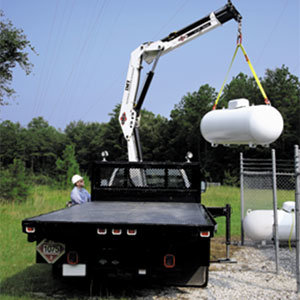Call for pricing and discounts on our live courses.
This signal person rigger certification course is compliant with the most recent updates of OSHA Subpart CC and Subpart H.

- We can do the whole job at our location or yours
- Study guides/handbooks are provided
- Trainers & Examiners come from the crane industry
- Training & Testing done any day of the week
- You make one call, we do the rest
- Recognized by OSHA | Accepted by ANSI
A certificate of training as well as a ID card are awarded by Cranes101.
Signal Person / Rigger Course
This signal person rigger certification course is a focused operations and safety training designed for operators and ground workers. It is an excellent course for people just getting started in the industry.
Material covered in this course:
- Proper use of the ANSI hand signals
- Proper rigging techniques
- Crane characteristics and dynamics
- Signal person requirements per OSHA
- 1926.1419-1926.1422
- Working near power lines
- Wire rope and chain design
- Rigging component identification
- Mathematical calculations
- Sling selection
- Rigging inspection
- Voice signals
- Crane limitations
Need a more convienient option? Take our Signal Person Rigger Course online!
Course Information Request Form
Please provide the following info and a member of our team will be in touch with you shortly.
For your reference, here are the relevant government regulations from OSHA:
- Part Number:1926
- Part Number Title:Safety and Health Regulations for Construction
- Subpart:1926 Subpart CC
- Subpart Title:Cranes and Derricks in Construction
- Standard Number:1926.1428
- Title:Signal person qualifications.
- GPO Source:e-CFR
1926.1428(a)The employer of the signal person must ensure that each signal person meets the Qualification Requirements (paragraph (c) of this section) prior to giving any signals. This requirement must be met by using either Option (1) or Option (2) of this section.1926.1428(a)(1)Option (1)–Third party qualified evaluator. The signal person has documentation from a third party qualified evaluator (see Qualified Evaluator (third party), § 1926.1401 for definition) showing that the signal person meets the Qualification Requirements (see paragraph (c) of this section).1926.1428(a)(2)Option (2)–Employer’s qualified evaluator. The employer’s qualified (see Qualified Evaluator (not a third party), § 1926.1401 for definition) evaluator assesses the individual and determines that the individual meets the Qualification Requirements (see paragraph (c) of this section) and provides documentation of that determination. An assessment by an employer’s qualified evaluator under this option is not portable–other employers are not permitted to use it to meet the requirements of this section.1926.1428(a)(3)The employer must make the documentation for whichever option is used available at the site while the signal person is employed by the employer. The documentation must specify each type of signaling (e.g. hand signals, radio signals, etc.) for which the signal person meets the requirements of paragraph (c) of this section.1926.1428(b)If subsequent actions by the signal person indicate that the individual does not meet the Qualification Requirements (see paragraph (c) of this section), the employer must not allow the individual to continue working as a signal person until re-training is provided and a re-assessment is made in accordance with paragraph (a) of this section that confirms that the individual meets the Qualification Requirements.1926.1428(c)Qualification Requirements. Each signal person must:1926.1428(c)(1)Know and understand the type of signals used. If hand signals are used, the signal person must know and understand the Standard Method for hand signals.1926.1428(c)(2)Be competent in the application of the type of signals used.1926.1428(c)(3)Have a basic understanding of equipment operation and limitations, including the crane dynamics involved in swinging and stopping loads and boom deflection from hoisting loads.1926.1428(c)(4)Know and understand the relevant requirements of § 1926.1419 through § 1926.1422 and § 1926.1428.1926.1428(c)(5)Demonstrate that he/she meets the requirements in paragraphs (c)(1) through (4) of this section through an oral or written test, and through a practical test.
[75 FR 48158, August 9, 2010]
Disclaimer: These codes may not be the most recent version. OSHA may have more current or accurate information. We make no warranties or guarantees about the accuracy, completeness, or adequacy of the information contained on this site or the information linked to on the state site. Please check official sources.



